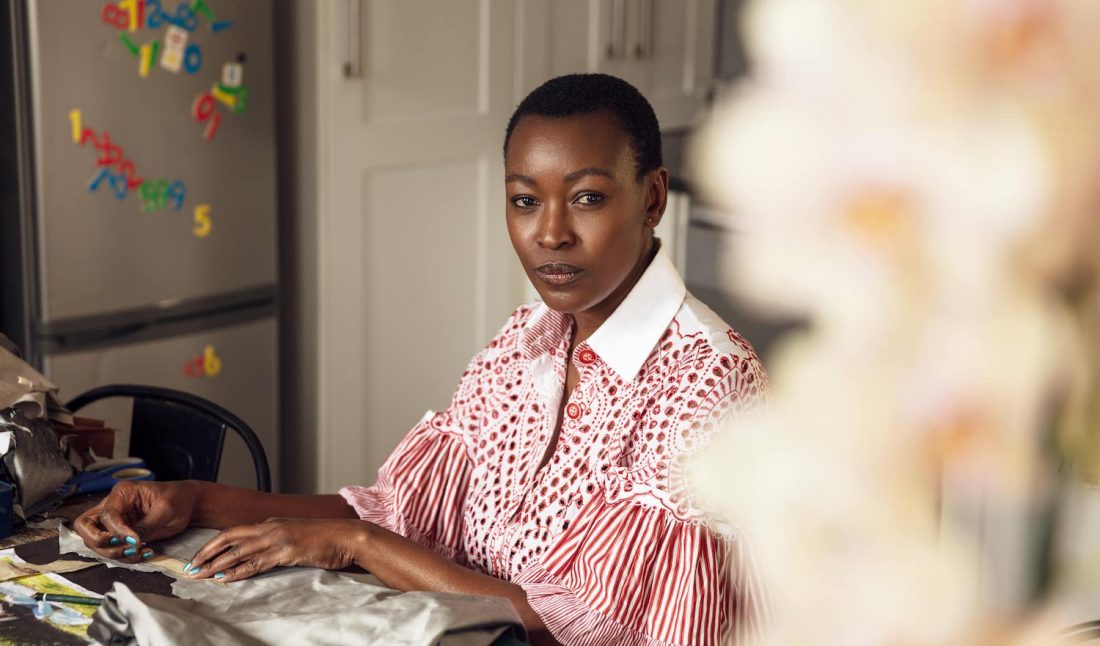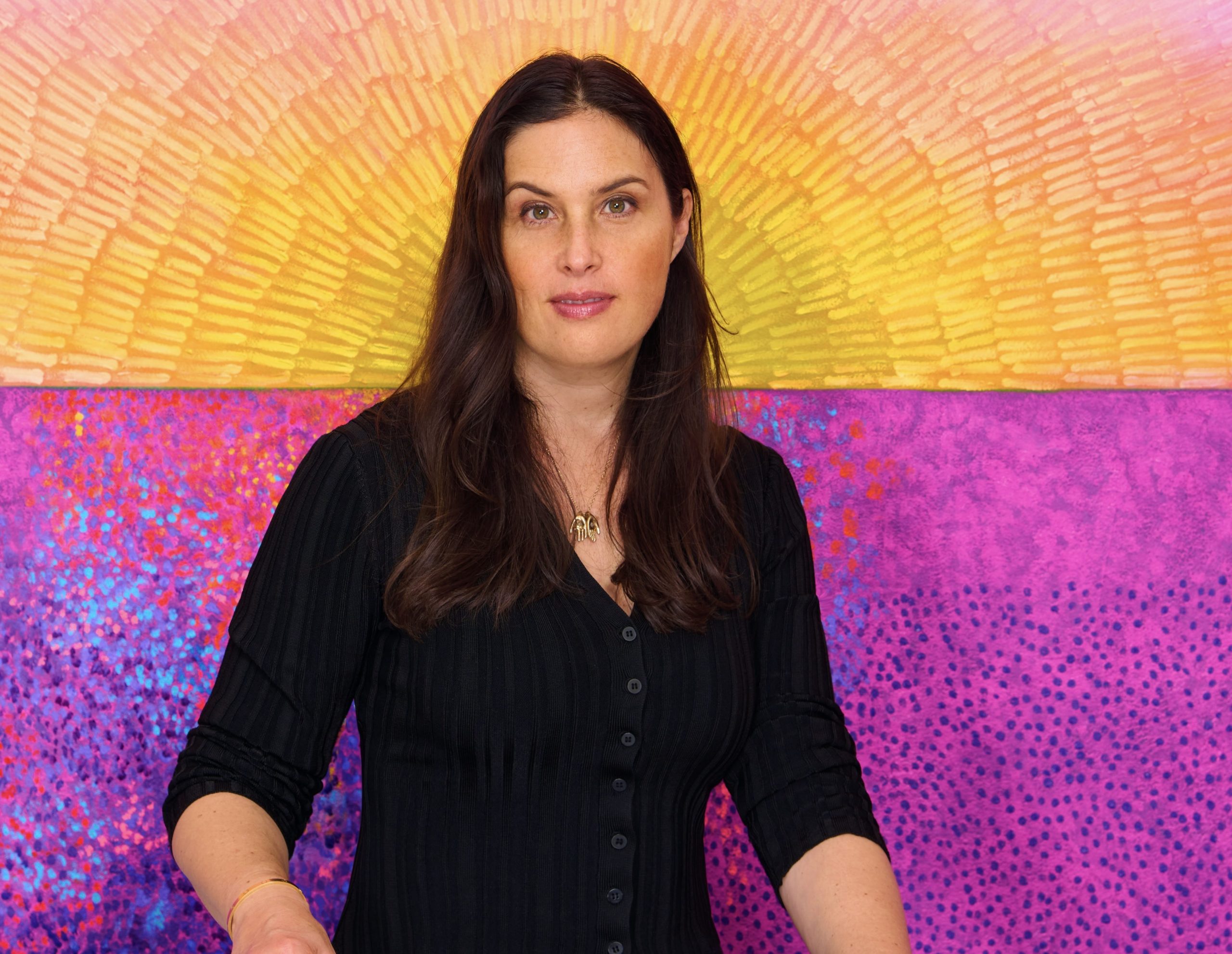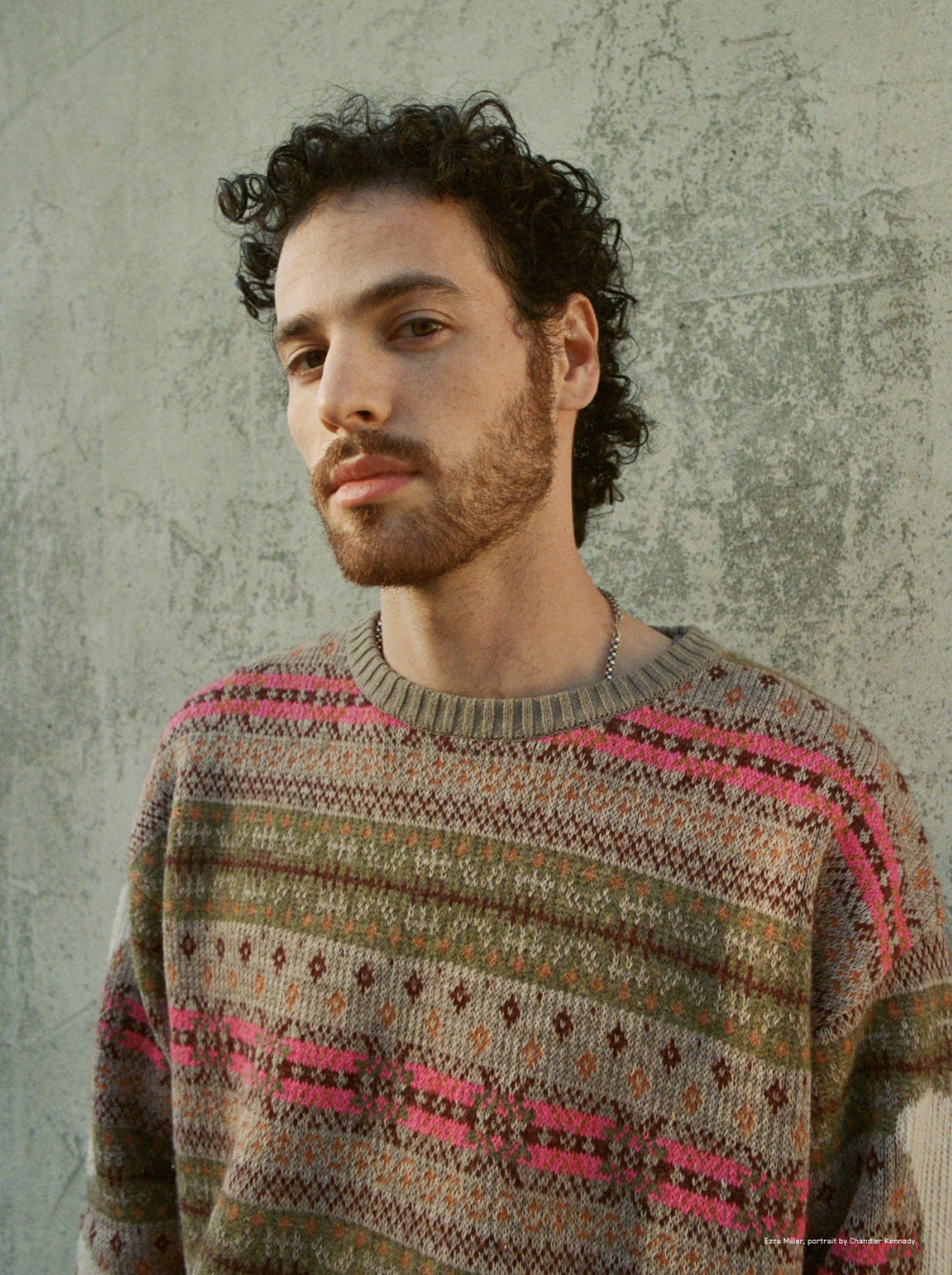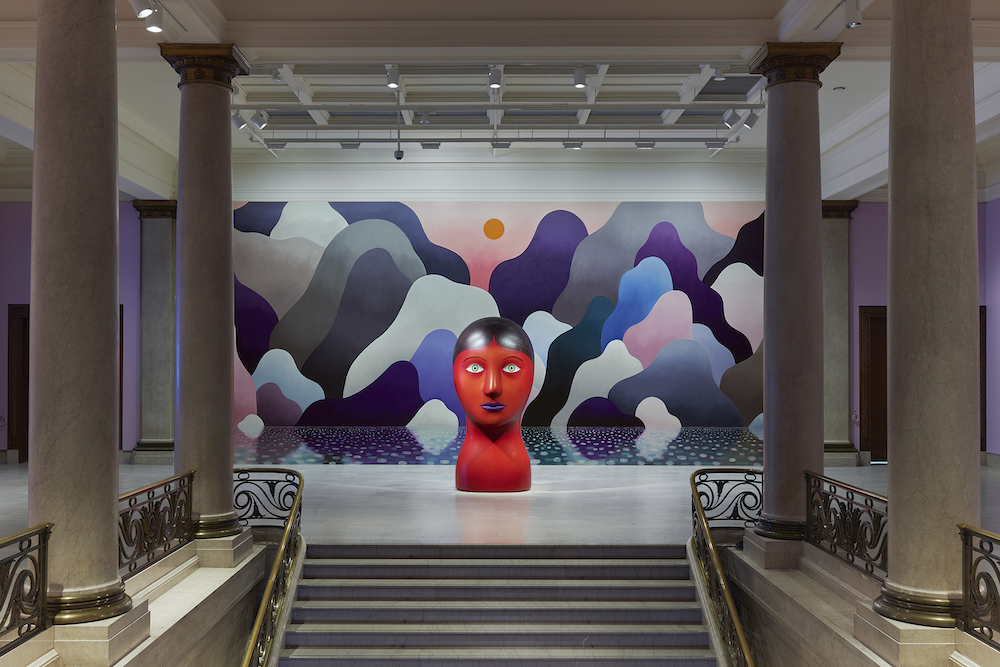Billie Zangewa’s solo exhibition “Thread for a Web Begun” (October 20, 2021–February 27, 2022) at the Museum of the African Diaspora in San Francisco brought together more than 15 years’ worth of her silk tapestries. Curated by Dexter Wimberly, the presentation also marked the Malawi-born artist’s first solo U.S. museum show, and it featured new and existing hand-stitched pieces that visualize the intimate meanings of life, work, and home. With each silk scene on view, Zangewa addressed themes beyond culture’s surface, from identity and gender to stereotypes and racial prejudice, expanding her reflection of today’s complex world.
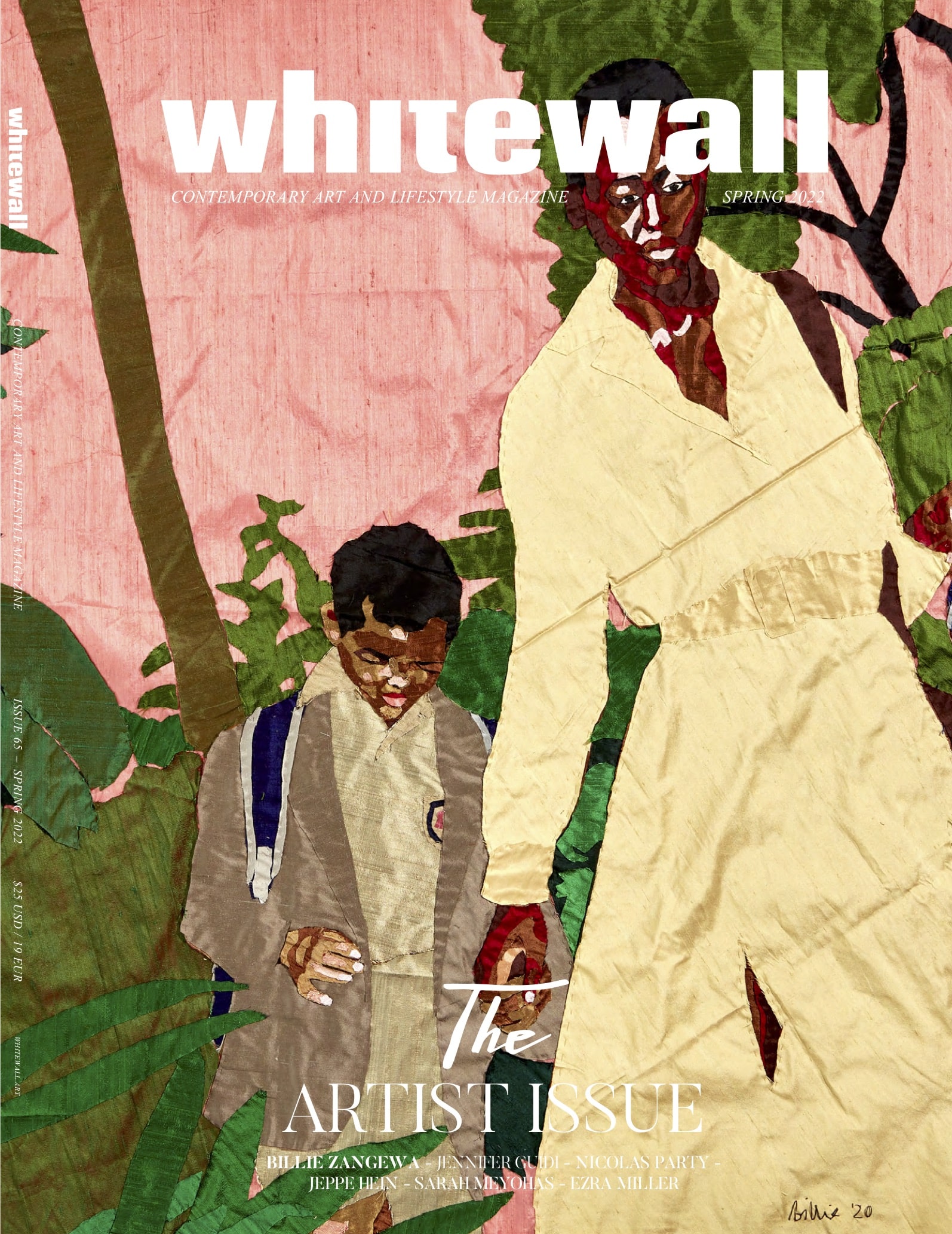 Billie Zangewa, “Soldier of Love,” 2020, 2018, courtesy of the artist and Lehmann Maupin, New York, Hong Kong, Seoul, and London.
Billie Zangewa, “Soldier of Love,” 2020, 2018, courtesy of the artist and Lehmann Maupin, New York, Hong Kong, Seoul, and London.
The artist’s earliest works were embroideries on found fabrics, depicting botanical scenes from Botswana, where she was raised. Her works then began to feature Johannesburg cityscapes, as she navigated womanhood and personal relationships in this urban environment. And after the birth of her son, Zangewa began creating her recognizable domestic interiors, exploring femininity, motherhood, and home, posing questions about how women’s roles in society are viewed and changing. Although many of Zangewa’s works are autobiographical, they are immensely relatable, drawing meaning from all aspects of life to understand how and why we live the way we do today.
Before “Thread for a Web Begun” closed, Zangewa spoke with Whitewall from her home and studio in Johannesburg about embracing feminism, creating tapestries, and finding home.
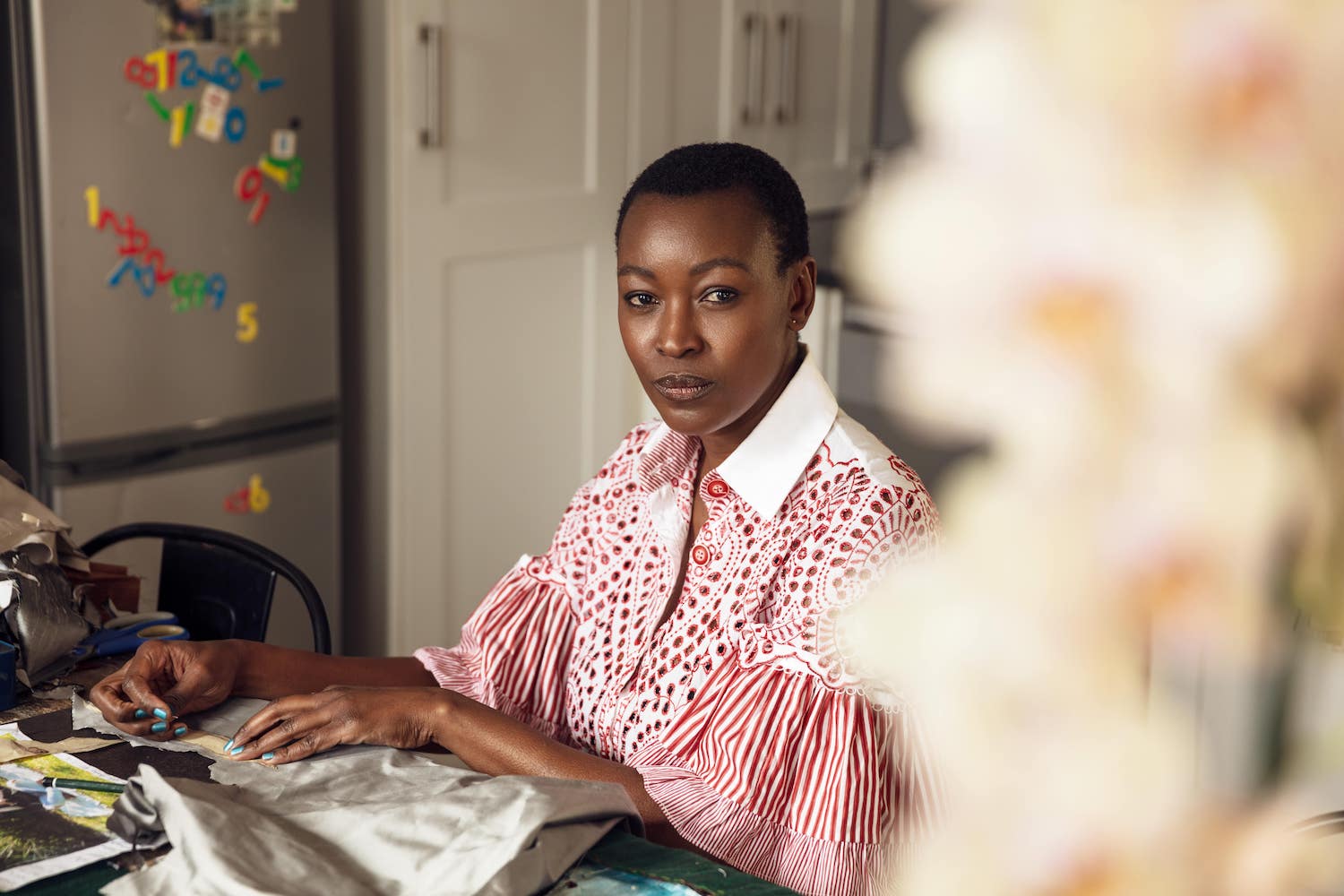 Billie Zangewa in her studio, photo by Jurie Potgieter, courtesy the artist and Lehmann Maupin, New York, Hong Kong, Seoul, and London.
Billie Zangewa in her studio, photo by Jurie Potgieter, courtesy the artist and Lehmann Maupin, New York, Hong Kong, Seoul, and London.
WHITEWALL: Your tapestries depict your lived experiences as a woman—at first through botanical landscapes inspired by where you grew up, then city views of Johannesburg, and domestic spaces following the birth of your son. How do you want to propose deeper themes through these everyday scenes?
BILLIE ZANGEWA: By sharing the intimate daily life of a Black African woman, I was looking firstly to comfort myself by saying, “The world might be a difficult place to navigate because of your identity, but you can make a place for yourself in it. You can still access your personal power and find pleasure and joy.” I also wanted anyone that had a dream that they felt was out of reach, because of their identity and where they come from, to dare to dream, because I did, evidenced in my work. I wanted to humanize this by showing a Black woman doing things that are common to all of humanity, to give a voice to a once silenced sector of our society.
WW: What was the starting point for “Thread for a Web Begun”?
BZ: After a chance meeting in London at a hotel bar in Shoreditch during Frieze Week, Dexter Wimberly, who curated the show, asked me whether I wanted to have a solo institutional show, and without hesitation, my answer was a resounding, “Yes!” I had met Dexter in New York City a couple of years earlier at 1-54 Contemporary African Art Fair in Brooklyn, where we had a public conversation together as part of the fair program. I really enjoyed his temperament, so when he asked that we work together again, I was very happy to do so.
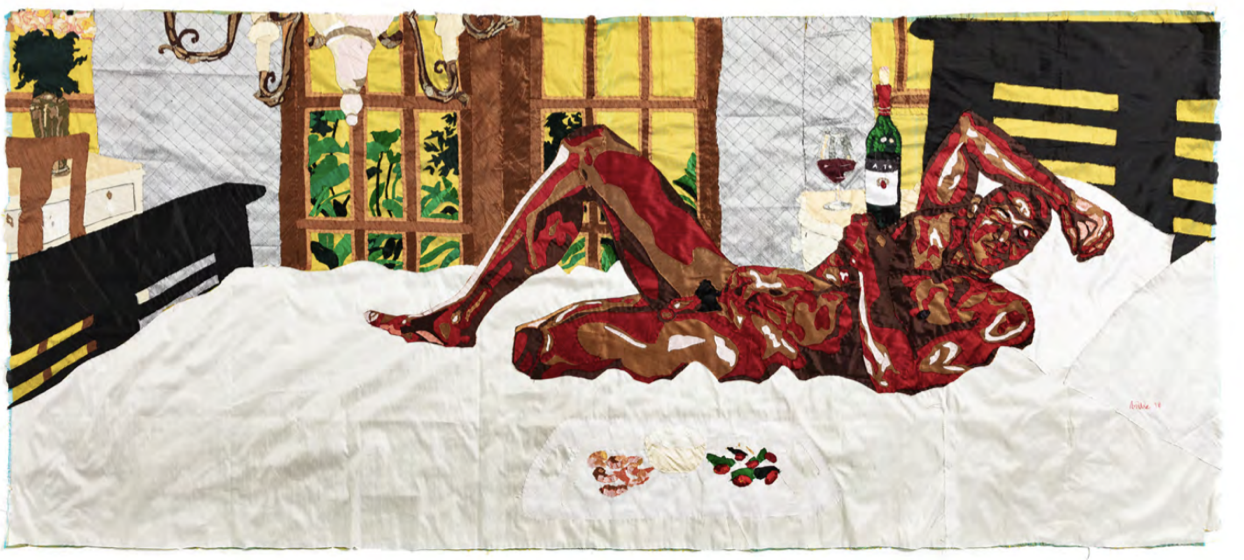 Billie Zangewa, Afternoon Delight II, 2018, courtesy the artist and Lehmann Maupin, New York, Hong Kong, Seoul, and London.
Billie Zangewa, Afternoon Delight II, 2018, courtesy the artist and Lehmann Maupin, New York, Hong Kong, Seoul, and London.
WW: You’ve described your works as representing “daily feminism.” What is “daily feminism” to you?
BZ: It’s really about embracing the daily things that women do on the home front, and outside, that make a significant impact on the daily runnings of our society. It’s about embracing the daily feminine. No matter how society minimizes the importance of these acts, they are important to our social structure.
WW: Where do your works typically begin and end?
BZ: A work starts with an emotion or an experience that somehow speaks to me. I ruminate over it in my head until a clear picture emerges in my mind’s eye, at which point I compile my research photos. I then go through my silk fabrics and pick a background silk that I think will best serve the narrative. I then trace the edges of the fabric onto newsprint paper and begin my pencil drawing on the paper. This drawing is my template, and what I love about it is that once a work is complete, the drawing is reduced to confetti and all traces of it are gone, transformed into silk.
Once I’m happy with the drawing I pin fabric onto it, and then cut and place the cut pieces of fabric onto the chosen background silk. I usually work in layers, cutting and pinning the first layer of the different selects in the work. Once this is done, I move on to the next layer, adding details where I see ft. I also enjoy having fat areas with no layering or details as places for the eye to rest. Finally, I hand-sew all the pieces onto the background.
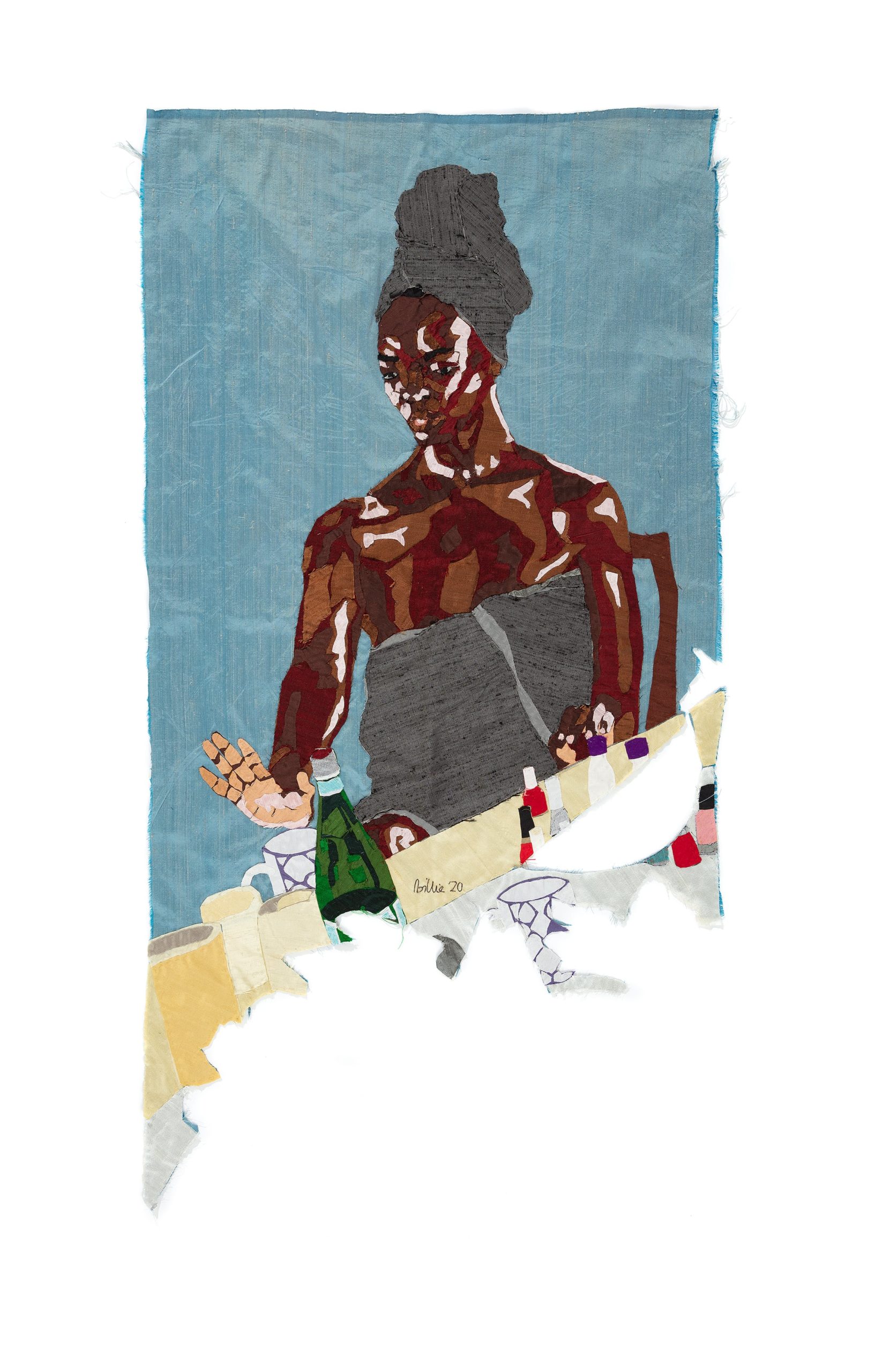 Billie Zangewa, “Self-Care Sunday,” 2020, courtesy of the artist and Lehmann Maupin, New York, Hong Kong, Seoul, and London.
Billie Zangewa, “Self-Care Sunday,” 2020, courtesy of the artist and Lehmann Maupin, New York, Hong Kong, Seoul, and London.
WW: About how long might this process take?
BZ: A work can take anywhere from two weeks to three months. It depends on the work and time constraints. I usually work with dupion silk, as it’s my absolute obsession, but I love to add nuance by adding other types of fabric when it feels right.
WW: Your early creations explored the male gaze and led you to think critically about how women view themselves—and eventually what self-portraiture could look like for women. How has this idea evolved in your practice?
BZ: At some point I realized that I was seeing myself through a man’s eyes—seeking approval from men, living my life in relation to another. It came to me that whilst I lived this way, I was in essence giving permission for others to take my power. I was giving it away. Then I asked myself the questions, “What if I started to see myself through my own eyes? What would happen if I took my power back and negated the omnipresent male gaze?” This is something I started to explore in my work, portraying myself as a poised, independent, empowered individual, not afraid to share her intimate self and be vulnerable. I think it’s the same thing that encouraged me to openly share the joys of motherhood, because it has changed me in positive ways. My son has taught me to love in a way that I didn’t know was possible.
WW: You grew up in Malawi, Zimbabwe, and Botswana through the 1970s and ’80s and have said that, because of that, you didn’t have a sense of “home.” What does “home” feel like today?
BZ: I have spent my whole life trying to get to this place—home. My son helped me realize it because I wanted him to have stability, at least in the early years of his childhood. When he was born, he went home from the birthing center to his paternal grandmother’s house, where his father still lives, so he already is much more rooted than I was. My little house is my sanctuary. I feel content here, and I’ve even bought some furniture! I’ve always been a homebody, so it’s really important for me to have a place I can call my own where I can be at ease.
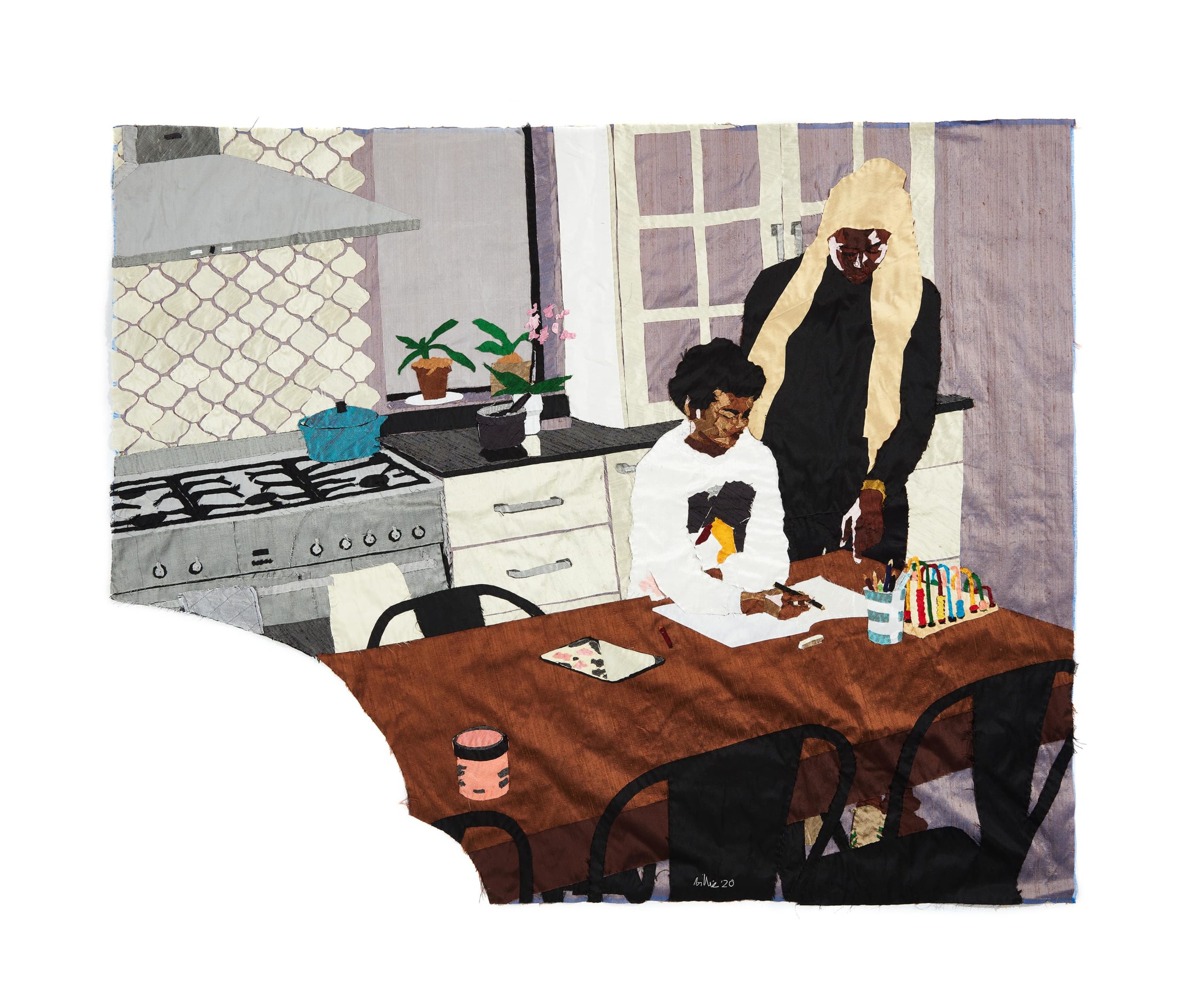 Billie Zangewa, “Heart of the Home,” 2020, courtesy of the artist and Lehmann Maupin, New York, Hong Kong, Seoul, and London.
Billie Zangewa, “Heart of the Home,” 2020, courtesy of the artist and Lehmann Maupin, New York, Hong Kong, Seoul, and London.
WW: Last time we spoke, during June 2020 at the height of the pandemic, you mentioned that you were finding hope by trusting that things are happening for a reason. How has the pandemic impacted the way you view your life or work since?
BZ: I am just grateful that a long time ago I had the courage to follow my passion despite the limitations that I was faced with. In a period where people were questioning their life choices, I didn’t have to. I’m doing what I’m supposed to be doing. The pandemic has given me more compassion for others and their position. I feel that I used to be a lot more judgmental before. It has also made me realize that time is very precious, that power is always in the present moment, but also that tomorrow is promised to no one. I often check in with myself and ask myself if what I’m doing in that moment is what I really want to be doing.
WW: What are you working on this year?
BZ: I have quite a few things on the go, but I’ve decided to take the first quarter of 2022 off to focus on my home, spending more time with my son and actually using the kitchen to cook, work a little bit in the garden, work through my snag list—all the things I don’t have time for when I’m working on a project.
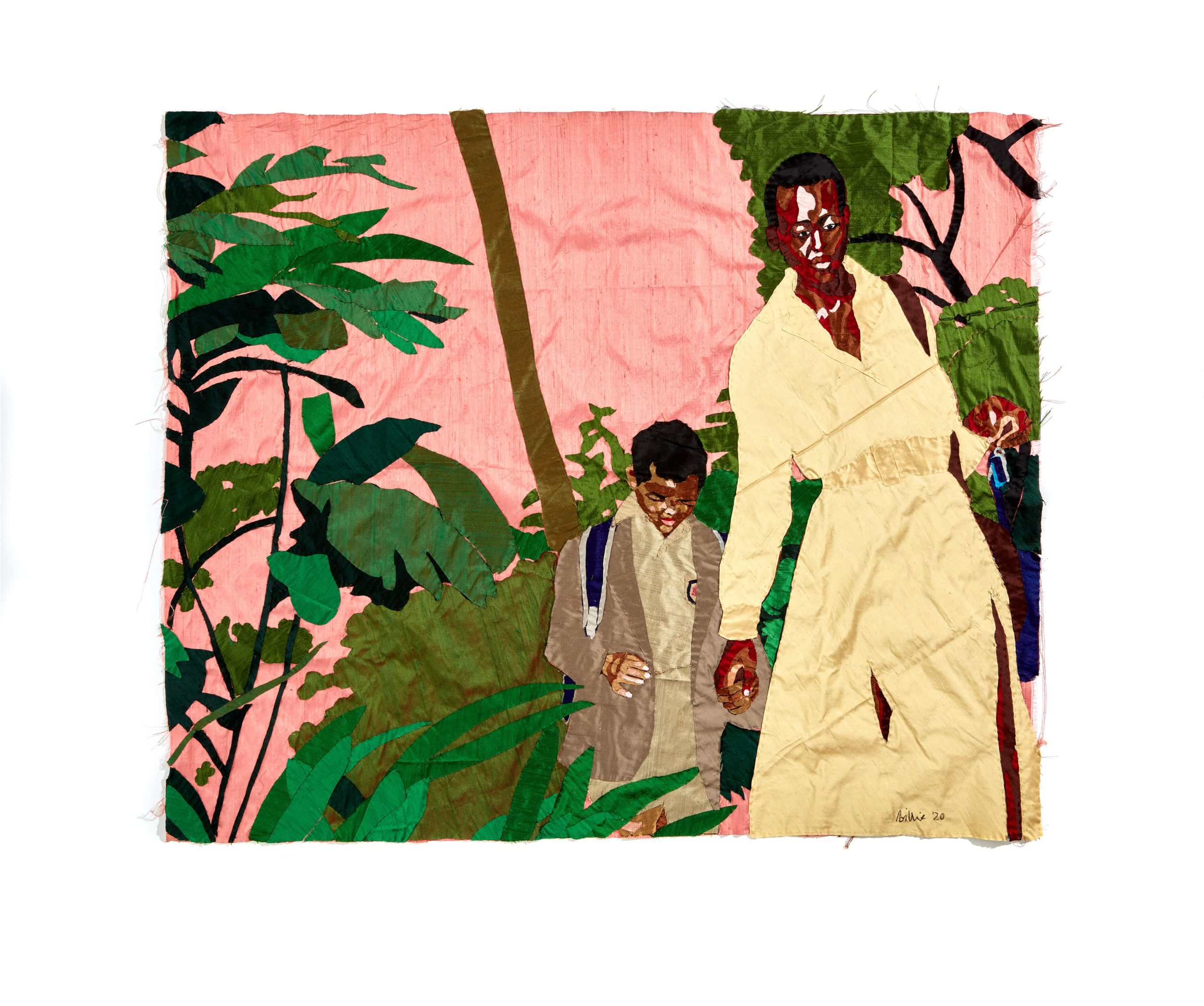 Billie Zangewa, “Soldier of Love,” 2020, 2018, courtesy of the artist and Lehmann Maupin, New York, Hong Kong, Seoul, and London.
Billie Zangewa, “Soldier of Love,” 2020, 2018, courtesy of the artist and Lehmann Maupin, New York, Hong Kong, Seoul, and London.






